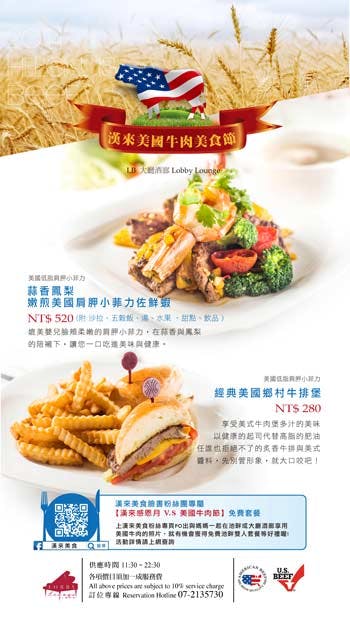Innovative Cuts Create Options for Taiwanese Beef Customers

With the price of a high-quality beef dinner topping $100, options for many beef-loving Taiwanese diners have narrowed, and restaurant operators are struggling to find menu options for the full economic spectrum of their customers.
Rising beef prices have inspired many of Taiwan’s top restaurants and hotels to partner with the U.S. Meat Export Federation (USMEF) to develop creative new dishes with more affordable cuts, including the petite tender and the clod heart. Early results indicate that both restaurants and consumers are enjoying the fresh approach, and Taiwanese media outlets are taking notice.
With funding support from the Beef Checkoff Program and the USDA Market Access Program (MAP), USMEF recently hosted seminars for Taiwan’s food service operators, retailers and importers to educate them about the quality and value of these two U.S. beef cuts. Cooking demonstrations, product information and recipes showed the participants how the petite tender and clod heart could add menu alternatives at a variety of price points.
Jimmy Chang, chef and owner of the Chez Jimmy restaurant chain, was the first to introduce the petite tender, adding it to the menu in four of his restaurants. He soon found it accounted for 15 percent of his sales.
“Food service operators need to commit to developing new menu items,” said Chang. “With creativity, determination and a perspective of what is important to the customer, we can add new menu items that our customers will appreciate and will be successful for us.”
The Regent Taipei Hotel introduced four petite tender menu items at its mid-price restaurant, Azie, with dishes ranging from $12 to $17, finding them to be a good fit.
“We think the petite tender matches our middle-price restaurant,” said Simon Wu, executive director of the Regent Taipei’s food and beverage department. “As a leader in Taiwan’s food service market, we feel it is necessary for us to try new items and be creative to meet our customers’ desire for variety and quality.”
Wu also appreciated the technical support from USMEF in helping his restaurant adopt the new menu items.

“The petite tender has the features of lean muscles without the grassy smell (of grass-fed beef),” said Maggi Wu, marketing planning manager for the historic Taiwan Grand Hi-Lai Hotel. “People are focused on flavorful, nutritious and low-fat meals, and the petite tender provides customers with more dish choices while giving restaurants an ingredient that can be used in steakhouses, buffets and for tappanyaki (Japanese style griddle cooking).”
The Grand Hi-Lai found a variety of uses for the new cut, serving it at the hotel’s poolside café and lobby lounge in six dishes ranging from $10 to $24. In addition, the hotel’s dietician provided information on the nutritional value of this lean cut. Customers who posted photos to the Hi-Lai’s Facebook page during the promotion showing them sharing the dishes with their mothers were entered in a drawing for special meal prizes at the hotel.
The interest by leading hotels and restaurants in the newly introduced U.S. beef cuts has helped generate a significant amount of media attention:
The clod heart is joining the petite tender at Taiwan’s Ambassador Hotel in a special “Great American BBQ Beef” promotion that runs from mid-June through the end of July at nine restaurants. The clod heart will be used for a smaller beef roast while the petite tender is targeted for steaks and lighter mid-priced brunch items.
“The success that hotels are having with these tasty but affordable cuts is inspiring retailers to rethink their approach to these two lean cuts,” said Davis Wu, USMEF-Taiwan director. “While some retailers have focused on the marbling of traditional U.S. beef cuts, others are hearing their customers inquire about low-fat menu items, so they are beginning to inquire about the availability of these cuts. That interest is working its way back to importers as well.”
Through the first four months of 2014, U.S. beef exports to Taiwan stood at 9,542 metric tons (21 million pounds) valued at $77.9 million. While these totals are down 12 percent in volume and 8 percent in value from last year, they saw upward movement in April, rising 12 percent in volume and 8 percent in value versus 2013.
